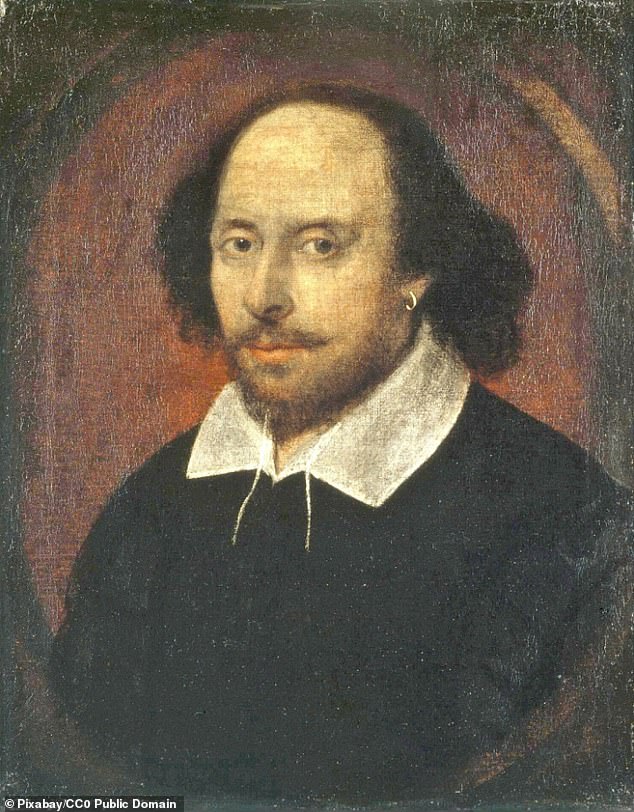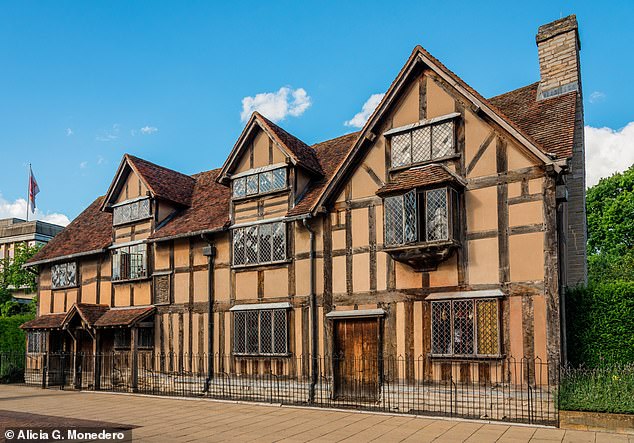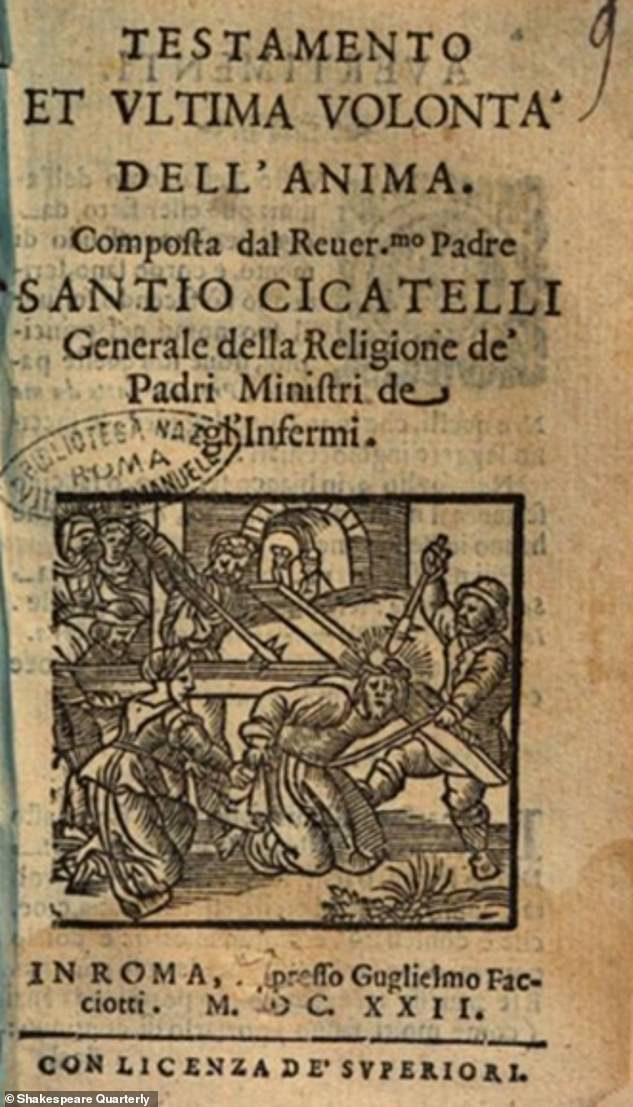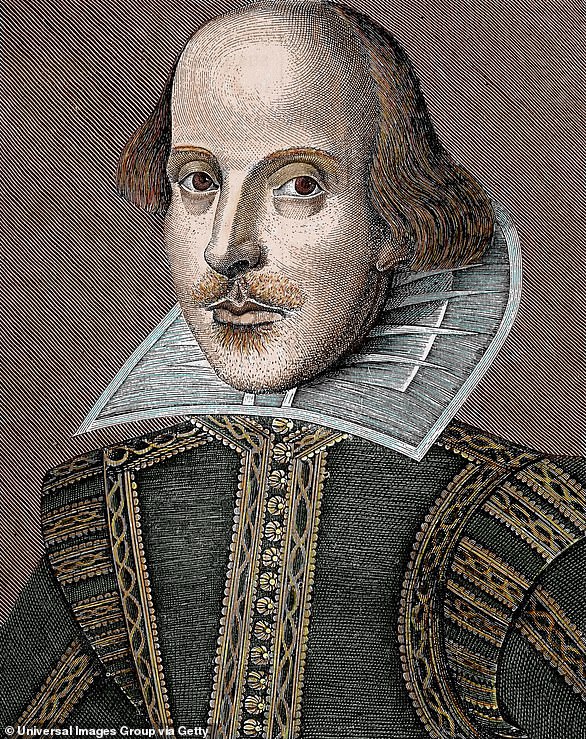If you say the words “Shakespeare’s sister” you might think of the 1980s Irish pop duo or a famous song by The Smiths.
In fact, most people are unaware that the great English playwright ever had a brother.
But according to an academic at the University of Bristol, there is “no doubt” she existed, and a long-lost document suggests she also had an interest in writing.
Joan Shakespeare, who was five years younger than her brother William, wrote a religious document called ‘Spiritual Testament’, a study reveals.
Until now, scholars thought the document was written by William’s father, John, but this erroneous assumption may have been due to a transcription error and gender biases of the time.

English playwright, poet and actor William Shakespeare is widely believed to have been the greatest playwright of all time, but the fact that he had a sister is little known.
The new study was carried out by Professor Matthew Steggle, from the Department of English at the University of Bristol, who says Joan is today “almost unknown”.
“There are no illustrations of Joan, just seven pieces of paper from her life naming her, but there is no doubt she existed,” he told MailOnline.
“That’s normal for the paper trail of a not-very-rich woman from the 17th century.”
Joan Shakespeare was five years younger than her brother and, in the last years of his life, was his only significant living relative apart from his wife and daughters.
All her life, Joan lived in the family home on Henley Street in Stratford-upon-Avon, famous as William’s birthplace and now a major tourist attraction.
It is believed that she married a penniless merchant, at which time her name changed to Joan Hart.
She had four children and outlived her husband and famous brother by 30 years, living quietly in part of the former Shakespeare family home.
Professor Steggle’s study focused on a crucial document known as the “Spiritual Testament”, found by a bricklayer in the rafters of Shakespeare’s house around 1770, but which has sadly now been lost.


The family home: Shakespeare’s birthplace in Henley Street, Stratford-upon-Avon, Warwickshire, where Joan is also believed to have been born
“It was last recorded in 1790 and was sent to its owner, who ran a pub in Stratford,” Professor Steggle told MailOnline.
“I imagine it ended up on display in their pub and was thrown away during a refurbishment or something.”
Of the document, printed in 1790, there is a transcription that the academic describes as ‘the closest we can get’ to the original.
In the 1790 transcription, the author refers to himself in the first person as “John”, but Professor Steggle believes this was a mistake.
“What we have is this transcription from 1790 that transcribes the name as ‘John’ every time,” he said.
“But it is a fairly common mistake for people transcribing 17th-century documents to misinterpret the name ‘Joan’ as ‘John.’
“They can look very similar with a 17th-century handwriting, especially if you expect to see a man’s name there.”


Professor Steggle’s study focused on a crucial document known as the “Spiritual Testament”, sadly now lost. But this image shows a transcription of the crucial passage from the Spiritual Testament, printed in 1790. Note that the writer refers to himself as “John” rather than Joan; the academic believes this was an error during transcription.
The Spiritual Testament is actually an English translation of an Italian religious text, ‘The Last Will and Testament of the Soul’.
In it, the writer commits to having a good Catholic death, which was controversial at the time because Catholicism was strongly disapproved of.
For example, one excerpt reads: ‘I will voluntarily accept death in whatever form it comes to me, conforming my will to the will of God; accepting him in satisfaction for my sins and giving thanks to his divine majesty for the life he has granted me.’
For centuries, the assumption that the author was John, Shakespeare’s father, fueled the belief that he was a closet Catholic.
To investigate, Professor Steggle used Google Books and other Internet archives to locate the first editions of that text in Italian and six other languages, many of which survive only in a single copy and are scattered throughout the libraries of Europe.
According to Professor Steggle, the Spiritual Testament cannot have been written by John because ‘The Last Will and Testament of the Soul’ was published in 1613, more than a decade after John’s death in 1601.
This showed that it was several years after John Shakespeare’s death, so the author of the English translation found in Shakespeare’s house was in fact the only other possible J Shakespeare – Joan – who lived from 1569 to 1646.


Spiritual Testament is an English translation of an Italian religious text, ‘The Last Will and Testament of the Soul’ (pictured)
In his study, Professor Steggle argues that Joan adapted ‘The Last Will and Testament of the Soul’ to create the Spiritual Testament in the 1630s.
The study not only reveals that it was actually Juana, and not Juan, who was the closest Catholic, but also that she was interested in writing like her brother.
Ultimately, historical gender biases may have helped obscure the truth about who adapted this copy of the Spiritual Testament in Shakespeare’s home.
“Until now no one saw that this belonged to her, because no one thought that a document like this could belong to a woman,” Professor Steggle said.
‘Shakespeare’s Sister’ is also the name of a famous essay by Virginia Woolf, about how Joan could never hope to be a writer or have her writings preserved.
“It has become something of a symbol of all the lost voices of early modern women,” Professor Steggle added.
“There are hundreds of thousands of words that have survived from her brother, and so far none, of any description, from her.”
The research, published in the journal Shakespeare quarterlyis part of Professor Steggle’s work on an upcoming biography of William Shakespeare.

